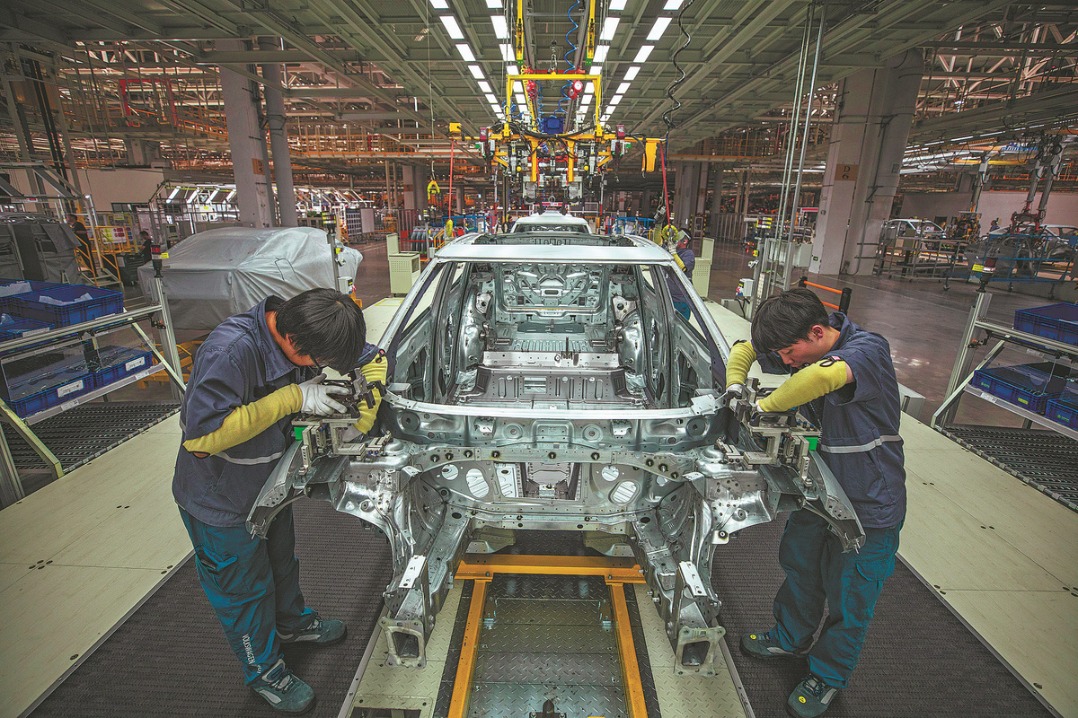Unlocking new potentials


China should turn its population pressure into new growth momentum
According to the National Bureau of Statistics, China's population was 1.41 billion at the end of 2022, down 850,000 year-on-year in what was its first population decline since 1961. The negative population growth is a natural outcome of China's long-term low fertility rate and greater life expectancy and signals that China has entered a new normal of negative population growth.
Due to the sheer size of the Chinese population, during the initial stages of negative population growth, the inertia of the huge population will remain unchanged.
Assuming that the fertility rate remains unchanged, the Chinese population will remain about 1.4 billion before 2035 and about 1.3 billion before 2050. Even if China's working age population shrinks to 600-700 million by 2050 from the current 900 million, the figure will be larger than all the labor force in developed countries combined. Even though India is set to surpass China as the world's most populous country, China remains one of the two major countries with a population exceeding 1 billion. Thus, China's core advantage that lies in its mammoth population will remain unabated for a certain period of time.
China has established the world's largest higher education system with 240 million people, or 17 percent of the total population, having received higher education as of 2021.The number of Chinese college graduates reached 10.76 million in 2022, and is expected to reach a record 11.58 million in 2023.
Accordingly, the average years of education of the working-age population will continue to increase and China's stock of human capital will also continue to increase before 2035. According to a research by Tsinghua University, due to the improvement of education levels and health conditions, calculated by human capital, China's total human capital will be equivalent to that of 1.7 billion people by 2050 (based on the population equivalent of 2020).
In a nutshell, China's advantage, which lies in its huge population, will remain unchanged for some time to come. The increase in the number of "young olds" has opened a new window of opportunity for the development of human resources, wherein the increase in new demographic dividends will offset the decrease in traditional demographic dividends. We have to pay high attention to the challenges brought by a shrinking population and, at the same time, turn the pressure of negative population growth into a momentum for high-quality economic development.
The 20th National Congress of the Communist Party of China has put forth the goal of basically realizing socialist modernization by 2035.One of its main goals is to elevate China's per capita GDP to the level of moderately developed countries. China's per capita GDP should first cross the threshold of $20,000 to join the ranks of developed countries, which necessitates an average annual GDP growth rate of around 4.8 percent from 2021 to 2035.
According to some experts, if other factors remain unchanged, the negative population growth will reduce China's potential annual growth rate from 4.8 percent to 4.53 percent, bringing about grave challenges for achieving the desired targets.
That said, the forecast is based on the premise that other factors remain unchanged. If we could change other factors to offset the adverse impacts of a shrinking population, we could still boost the potential growth rate. The most effective way is to deepen reform and reduce distortions in the allocation of resources by allocating elements such as labor force to sectors with higher productivity levels.
Currently, the Chinese rural labor force accounts for 23 percent of the total population. There exists great potential in the transfer of agricultural labor as this will increase the number of workers in non-agricultural sectors, playing a positive role in lifting China's potential growth.
Furthermore, China entering an era of negative population growth coincides with a new round of technological revolution. Rapid advances in emerging new technologies such as artificial intelligence could greatly enhance labor productivity, thus offsetting the adverse impacts of a shrinking labor force brought by negative population growth. As intelligent technologies are widely applied, economic activities will have lower labor demand and labor productivity will continue to increase.
Theoretically, the negative population growth will hold back consumption demand primarily through a shrinking and aging population. Deepening population aging will reduce residents' willingness to consume and create a so-called low-desire society, therefore resulting in a slowdown in consumption expansion and squeezing the room for the expansion of investment and production. It will also place a heavier burden on the old-age and healthcare insurance systems, increase the burden on social and family support for the elderly, and reduce the consumption expenditure of the working age population.
That said, China has unique institutional potential in boosting consumption. A total of 300 million Chinese people have moved from rural areas to cities but have not yet been granted permanent urban residency. In 2021, China's urbanization rate of permanent residence hit 64.72 percent but only 46.7 percent of the total population had an urban hukou (household registration), a gap of 18.02 percentage points.
Research findings from OECD show that the per capita consumption expenditure of people moving from rural areas to cities will increase by around 30 percent if they have urban hukou and enjoy the same basic public services as urban residents.
In the medium to long term, more consumption potential could be unleashed from these new urban residents through institutional reforms such as hukou reform, land reform and public services reform. This will help alleviate the pressure from a slowdown in consumption expansion.
To sum up, in the short run, the negative population growth has a mild impact on economic growth; in the long run, however, it will deal a blow to economic growth. Therefore, China must be fully prepared to effectively cope with the ramifications.
To start with, China should make full use of the advantage of the gigantic population. In the initial stage of negative population growth, the inertia of the mammoth population still exists, enabling ample labor supplies. China should implement the employment priority strategy, stabilize the labor participation rate, and give full play to its advantage in abundant labor resources.
Second, China should put in place policies that encourage childbirths. The country should further optimize its fertility support policy system to more effectively solve practical problems people of reproductive age face — such as extending the maternity leave, providing more convenient child care services, implementing employment support schemes, and giving out childbirth allowance — to reduce the costs of child birth, child rearing and education.
Third, China needs to move faster to formulate policies that gradually delay retirement ages. By 2035, the "young old" (those aged between 60 and 69) will account for over 50 percent of the elderly population. We should support the reemployment and flexible employment of the "young old" who have the knowledge, skills, willingness and capability to work.
Last, China should create new reform dividends by deepening reforms. In the process of coping with challenges from a shrinking population, China needs to continue to advance reforms in the rural hukou, land, public services and social security systems, so as to accelerate the transfer of rural surplus labor force, move faster to grant them permanent urban residency, achieve full coverage of basic old-age and health insurance, and enhance the level of social security. This will create new reform dividends and inject fresh momentum into China's economic growth.
The author is vice-chairman of the China Center for International Economic Exchanges and an academic advisor for China Finance 40 Forum. The author contributed this article to China Watch, a think tank powered by China Daily.
The views do not necessarily reflect those of China Daily.

































